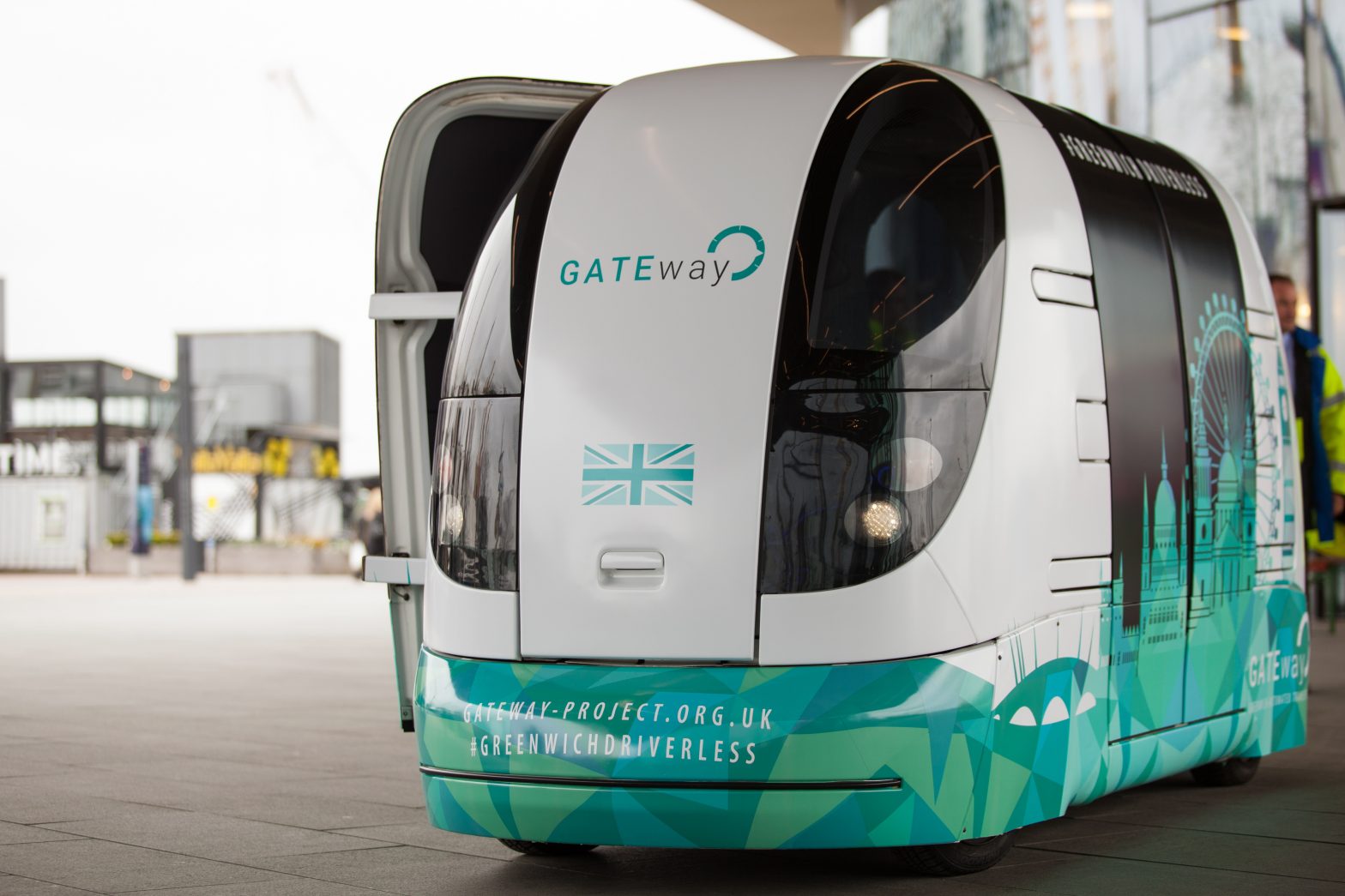
Photo: GATEway-image-1
What impact will autonomous vehicles have on your city?
20 July 2016
by Jonathan Andrews
In the race to put autonomous vehicles (AVs) onto roads, technology companies and car manufacturers have overtaken policy-makers’ capacity to act. Jonathan Ballantine and Adam Pitt explore how the integration of AVs would affect cities and how they are answering these challenges
Even just 20 years ago owning a car carried a degree of prestige and was seen as a status symbol or personal identity. Younger citizens of today have little-to-no interest in owning a car, evidenced by both the reduction of car sales and a fall in the number of driving licences being requested for those aged 18 to 30.
For millennials the ‘must have’ item is the smartphone, and mobility is seen as a service, for which they are ‘users’. Sharing is the new currency for this urban generation and AVs are set to play their part. But while the advantages of better safety and more efficient use of roads are promoted by manufacturers, what effect will autonomous vehicles have on the administrators tasked with introducing them to cities?
The introduction of AVs would mark a major shift in land use and parking trends … and a drop in municipal revenue?
One of the key consequences of car ownership for cities is land use. On average vehicles sit idle for more than 90 percent of the time. The introduction of AVs would mark a major shift in current parking trends, drastically changing where, how and when parking is needed.

“With fewer requirements for parking and greater capacity, AVs would free up expanses of valuable land currently devoted to parking,” says Stelios Rodoulis, Transport Consultant at Jacobs. Therefore cities will need to have a clear appreciation of what land could become available, and a strong vision for optimising land use, be it for public space or commercial development.
The collaboration of urban and transport planning departments would be effective for developing this long-term vision plan.
Cities within developing countries could also benefit significantly from the introduction of AVs, leap-frogging decades of unsustainable transport policy decisions. Typically, in these regions there is a lower percentage of car ownership, therefore shared AVs could become the basis of an urban transport system, which could have major benefits on mobility, social cohesion, pollution, land use and urbanisation.
If managed incorrectly the transition towards AVs will have varying implications for city planners. For example, the greater attractiveness and increased convenience of not having to drive may result in more cars being on the roads as people shift from mass transport. This could fuel urban sprawl as suburbs become more connected.
Cities must also be alert to the potential financial implications that AVs could have on public coffers. For example, the reduction in private car ownership may lead to a loss of public finances through less sales tax and fewer parking and fines being collected.
Cities would need to create special routes for AVs and consider road charging
The biggest challenge for cities is the integration towards full autonomy (level four), including determining the best approach for introducing AVs onto open roads. Will there be specific routes or zones for AVs? How will AVs interact with piloted vehicles?
“I think we will see different approaches with cities adapting policies to meet their own needs/circumstances, however, some consistency in regulations on AVs will be necessary,” says Kathryn Urquhart, Network Manager, Low Emission Vehicles, C40 Cities, who is based in LA.
The city of Oslo plans to ban private vehicles from the city centre, using alternative transport methods to transport people around. Could this approach be seen as a critical first step for preparing cities for AVs? First, cars are removed from a designated zone and then at a later stage shared AVs are introduced within this car-free zone.
“There are a lot of ideas here but most experts agree that the first phase of AV implementation will be in segregated networks,” says Dr Angelos Amditis, Research Director & Head of I-Sense Group.
City leaders will also need to develop responsive policies so as to mitigate any negative impacts. For example, urban sprawl is not optimal or sustainable, so how will cities manage or prevent this outcome?
According to Rodoulis, the best way to manage urban sprawl and its unintended consequences is through road pricing, where users pay according to the time and distance travelled, and also their willingness to share.
What if a criminal or terrorist hacks an autonomous vehicle?
A technical error or a software bug could cause issues ranging from a minor accident to a fatality. The counterargument is that software developers will be able to find fixes, but an area that is becoming increasingly contested by those within the industry is just how susceptible driverless vehicles could be to outside interference.
“A hack on a vehicle can range from something that is irritating–not playing the music you want to play–to something that could be fatal, hurtling passengers towards a cliff or wall,” explains Nick Reed, Project Lead for the GATEway (Greenwich Automated Transport Environment) project in the London Borough of Greenwich.
“And while it’s true that as these vehicles become more sophisticated there will be more attack platforms, the opportunities to cross-validate are increasing. For example, if you want to prevent someone from interfering with the GPS unit there are sensors that can be calibrated to allow vehicles to react and take action or go into safe mode.”
Brian Matthews, Head of Transport and Innovation at Milton Keynes Council, says that a team of programmers is in place at Oxford University that are setting the autonomous controls to check for any anomalies every microsecond.
“Essentially there are two computers in the car that are in constant conflict, one wanting to move and the other looking at ‘what if ’ scenarios. In reality we’ve probably spent 30 percent of our time on security and the default position is to stop a car travelling if a threat is detected, so the risk is low.”
To the champions of autonomous vehicles this was seen as paving the way for what the International Society of Automotive Engineers considers level-three automation, where a system is capable of unassisted driving until it becomes too complex to continue doing so. A human driver must be present and able to assume control at all times, which could be difficult in the event of a hack.
“If you’ve taken the responsibility away from the human being, you should expect them to be reading the newspaper or playing with their kids,” says Dave Marples, Chief Scientist at Technolution BV. “They are not going to be able to respond and take control of the vehicle at a moment’s notice.”
“I’ve spoken to pilots and navigators where an autonomous capability does already exist, and I’ve asked them how long it takes to re-establish context when the autopilot says I’m bailing out, and they say it takes 20-30 seconds,” he adds.
“If you are travelling at 130 kilometres an hour that 20-30 seconds is 800 metres before a driver resumes control in a meaningful way.”
Autonomous vehicles will be better for inter-city traffic rather than urban mobility
With congestion costing around 2 percent of European gross domestic product and forecasts suggesting that gridlock in Europe will rise by half by 2030, Matthews is convinced driverless cars can provide a valuable inner-city service. Reports indicate that the public share his enthusiasm and have encouraged Milton Keynes to forge ahead with efforts to incorporate an initial 40 of RDM Group’s LUTZ (Low-carbon Urban Transport Zone) Pathfinder pods within its existing public transport service.
Marples, on the other hand, asks whether self-driving cars may only ever be suitable for inter-city travel.
“If you look at accident statistics as a reasonable analogue for driving complexity and assume that the more difficult driving becomes, the more probability there is of having an accident, some 96 percent of all accidents occur on other [non-motorway] roads,” says Marples. “When you consider this [alongside the risk of a hack] what we are likely to see is that drivers will use manual mode to navigate cities and other areas where complexities exist then switch to autonomous mode for the motorway. At the other end of the journey they will resume control.”
Despite the challenges and uncertainties, governments and cities must start thinking about how they can manage the impacts of this disruptive technology, including whether to rewrite the rulebook rather than adapting to the new technology. “There is certainly a lot of work to do,” says Reed. “The big question is do we build on the layers of regulations and [security] protocols that we’ve already put in place or do we go back to the drawing board and start to consider adopting things that are already being employed in smart phones and other connected technologies available to the public?






